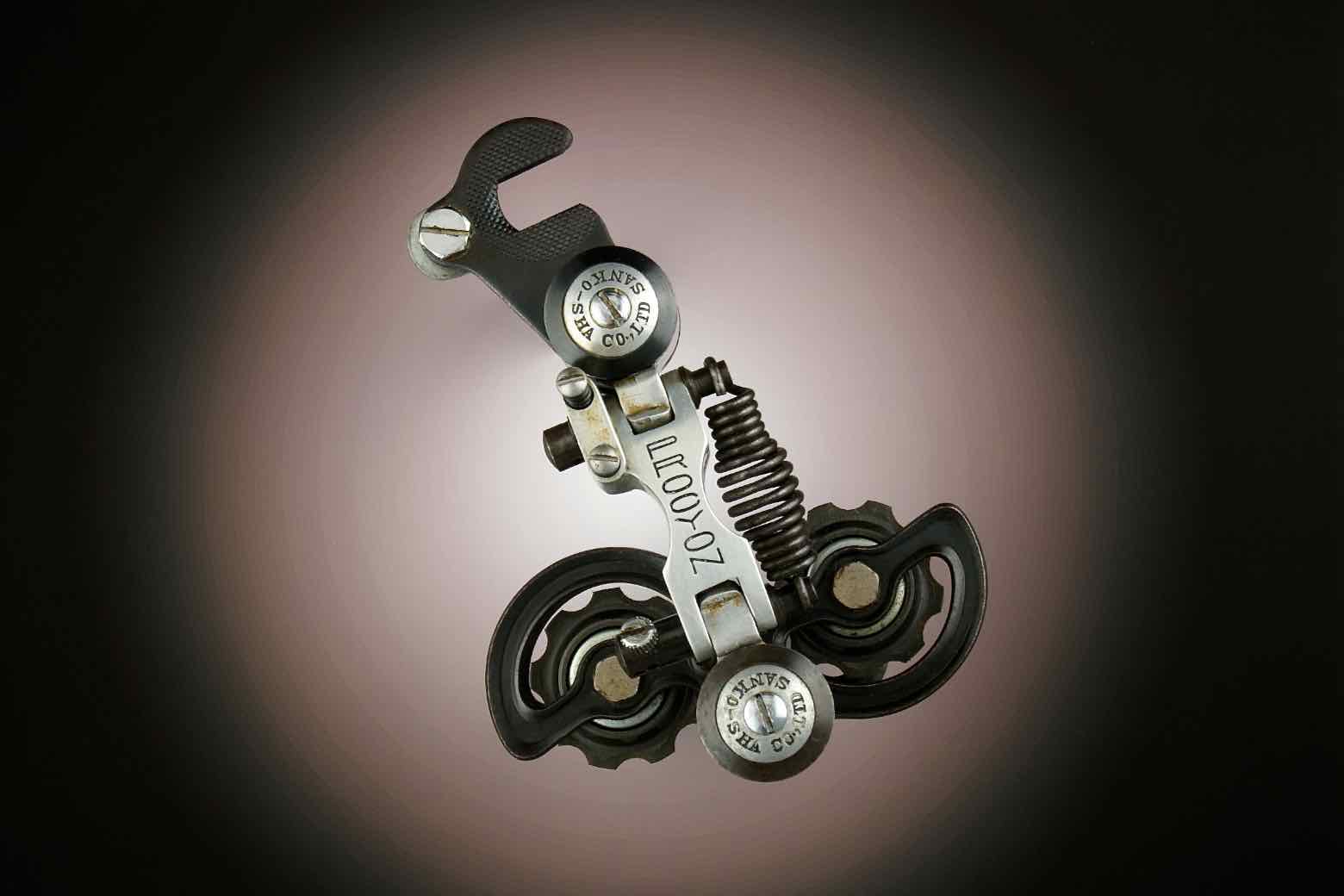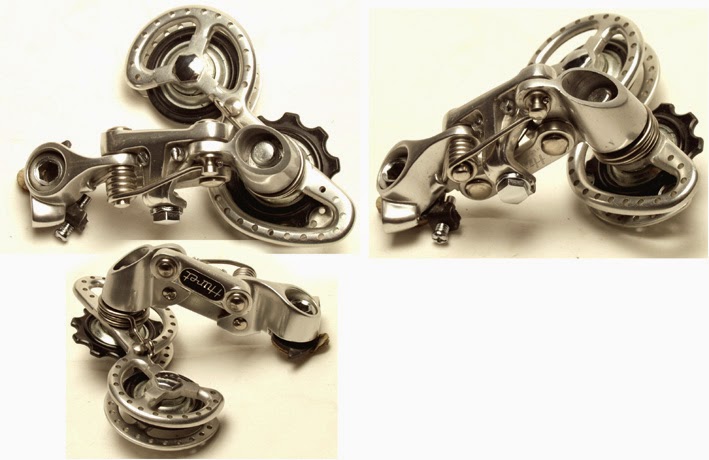Soubitez and Huret.
What do they have in common? Well, for one thing, they're both French. For another, they made parts and accessories found on constructeur bikes as well as basic ten-speeds from the 1970s Bike Boom.
Huret was best-known for its derailleurs, though it made other parts. Soubitez, on the other hand, was renowned for its bicycle lights, most of which were dynamo-powered.
So, other than being French and found on many of the same bikes, Soubitez and Huret wouldn't seem to have much in common--or much reason to collaborate. Or would they?
In addition to derailleurs, shifters and frame fittings (such as dropouts), Huret also made some cycling accessories. Perhaps its most famous was its Multito cyclometer, which ran quieter and registered more accurately than other bicycle odometers because it used belt-driven pulleys rather than the wheel-and-striker system of more traditional devices like the Lucas.
Before the Multito was introduced, in the late 1970s, Huret made speedometer/odometers that attached to the handlebars and emulated similar devices found on motorcycles and in cars. Huret sold it under its own marque, but bike makers like Schwinn rebranded it, which is how it ended up on countless kids' "muscle" bikes of that time.
Schwinn and other companies also rebadged Soubitez lights and dynamos, including the extremely popular "bloc" dynamo-light combo that attached to the front fork. (I had one on my Continental.)
Even with the seeming ubiquity of Soubitez lights and Huret speedometers and odometers, I don't think it ever occurred to me (or anyone I knew) to combine a light with a speedometer or odometer. Apparently, though, it was done.
I tried to find more information about the Soubitez 941 K N. It may well have been exported to the US and I missed it, but I don't recall seeing it anywhere back when so many of us rode with Soubitez blocs and Huret speedometers (and derailleurs: the one on my Continental was a re-branded Huret Allvit). The 941 K N seems to have been supplied with a Huret speedometer cable and driver. They may well have been the power source for the light. Or, judging by the shape of the light, it may have housed dry-cell batteries.
If that driver and cable were indeed the light's power source, it's not hard to imagine that the Soubitez 941 K N may well have influenced modern bike computers. Otherwise, it's an interesting curiosity.



















-filtered.jpg)













-filtered.jpg)